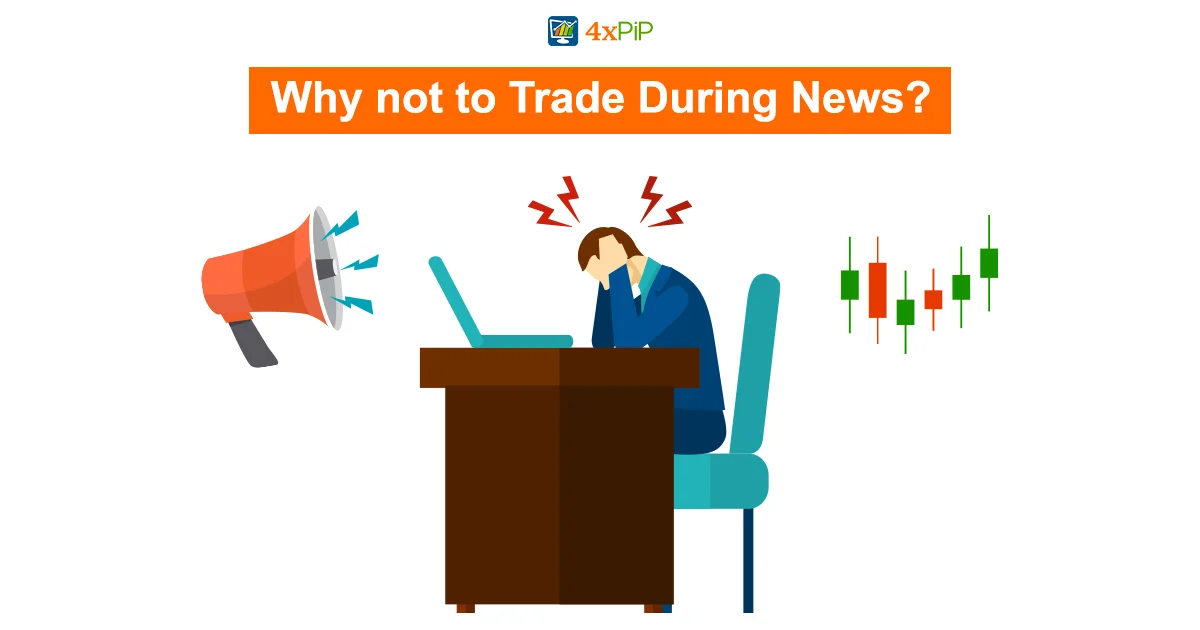In the ever-evolving landscape of currency trading, the influence of news releases remains a pivotal factor, capable of shaping market dynamics in profound ways. Traders must dive into the intricacies of how news releases impact currency markets to fortify their strategies and navigate the complexities with confidence. 4xPip, a steadfast companion in the trading journey ([email protected]), underscores the importance of adopting a cautious approach in the face of these market dynamics.
Price Fluctuations and Risk Exposure:

As traders immerse themselves in the intricacies of currency markets, the potent influence of releases becomes apparent. News releases, often accompanied by sudden and sizable price fluctuations, have the potential to trigger stop losses or margin calls. This, in turn, exposes traders to unexpected losses or the premature closure of positions. The heightened volatility during these periods necessitates a keen understanding of risk management, urging traders to recalibrate their strategies to weather such storms effectively.
Beyond the immediate risk exposure, news-induced price fluctuations may lead to broader implications for trading psychology. The emotional toll of witnessing rapid price changes can challenge a trader’s discipline and fortitude. Hence, it becomes imperative for traders to not only anticipate and manage potential financial risks but also to cultivate emotional resilience in the face of market turbulence.
Market Gaps and Challenges in Execution:

Market gaps, a phenomenon where prices leap from one level to another without any trades in between, present a formidable challenge for traders during news releases. This unpredictable leap in prices complicates market entry and exit strategies, putting traders at the mercy of slippage. Slippage, the variance between the anticipated and actual trade prices, can be a double-edged sword, adding an extra layer of risk. The ability to adapt swiftly and execute trades with precision becomes paramount in navigating the challenges posed by market gaps.
Moreover, market gaps underscore the significance of having robust risk mitigation strategies in place. Traders may explore options such as guaranteed stop-loss orders or setting conservative price limits to shield themselves from the adverse effects of market gaps. Additionally, a meticulous analysis of historical market behavior during news releases can offer valuable insights, aiding traders in developing more resilient and adaptive trading plans.
Impact on Bid-Ask Spread and Trading Costs:
The bid-ask spread, a fundamental aspect of currency markets, is not immune to the influence of news releases. These releases often contribute to an expansion of the bid-ask spread, the difference between the buying and selling prices of a currency pair. Wider spreads, particularly in the case of market maker brokers, can diminish profit potential and escalate trading costs. Traders must factor in these widened spreads when devising their trading strategies and carefully consider the choice of brokers to mitigate the impact on their bottom line.
Understanding the implications of widened spreads requires a nuanced approach to risk management and position sizing. Traders may opt to reduce their position sizes during periods of anticipated volatility, limiting potential exposure to widened spreads. Additionally, keeping abreast of the broker’s policies regarding spreads during releases and choosing brokers with transparent fee structures can contribute to a more cost-effective and informed trading experience.
Market Liquidity Challenges:
Market liquidity, representing the availability of buyers and sellers at various price levels, undergoes fluctuations during news releases. The diminished liquidity poses challenges for traders, making it harder to find willing counterparties for their trades. This scarcity of participants in the market amplifies the risk of price manipulation by larger players. As a result, traders need to approach news-driven scenarios with a well-calibrated understanding of market dynamics and liquidity challenges.
In response to liquidity challenges, traders may explore alternative trading strategies that align with the market conditions during news releases. Scalping, a short-term trading approach, can be particularly suited to periods of reduced liquidity, allowing traders to capitalize on small price movements. However, implementing such strategies requires a thorough understanding of the associated risks and a disciplined execution to navigate the inherent challenges.
Influence of Various Factors on News Releases:
News releases, influenced by a myriad of factors such as expectations, revisions, surprises, and market sentiment, add a layer of complexity to trading decisions. Attempting to predict the direction and magnitude of the market reaction becomes a daunting task for traders. The interplay of these factors creates an environment where false signals and whipsaws—sharp reversals in market trends—can catch unsuspecting traders off guard. A meticulous approach to releases involves staying attuned to these influencing factors and adjusting strategies accordingly.
To navigate the intricate landscape of news-induced market movements, traders may delve into the realm of fundamental analysis. Understanding the economic indicators that drive news releases can provide traders with a more holistic view of market dynamics. Additionally, staying abreast of global economic events and central bank policies can enhance a trader’s ability to anticipate potential market reactions, contributing to more informed and proactive decision-making.
Summary:
Navigating Currency Markets: Understanding the Impact of News Releases is an in-depth exploration of how news releases shape the dynamic world of currency trading. This comprehensive guide, enriched with insights from 4xPip, addresses the multifaceted impact of news-induced fluctuations on risk exposure, market gaps, bid-ask spreads, and liquidity challenges. Traders are urged to approach news releases with caution, employing adaptive strategies and continuous learning to thrive in this ever-evolving landscape.





